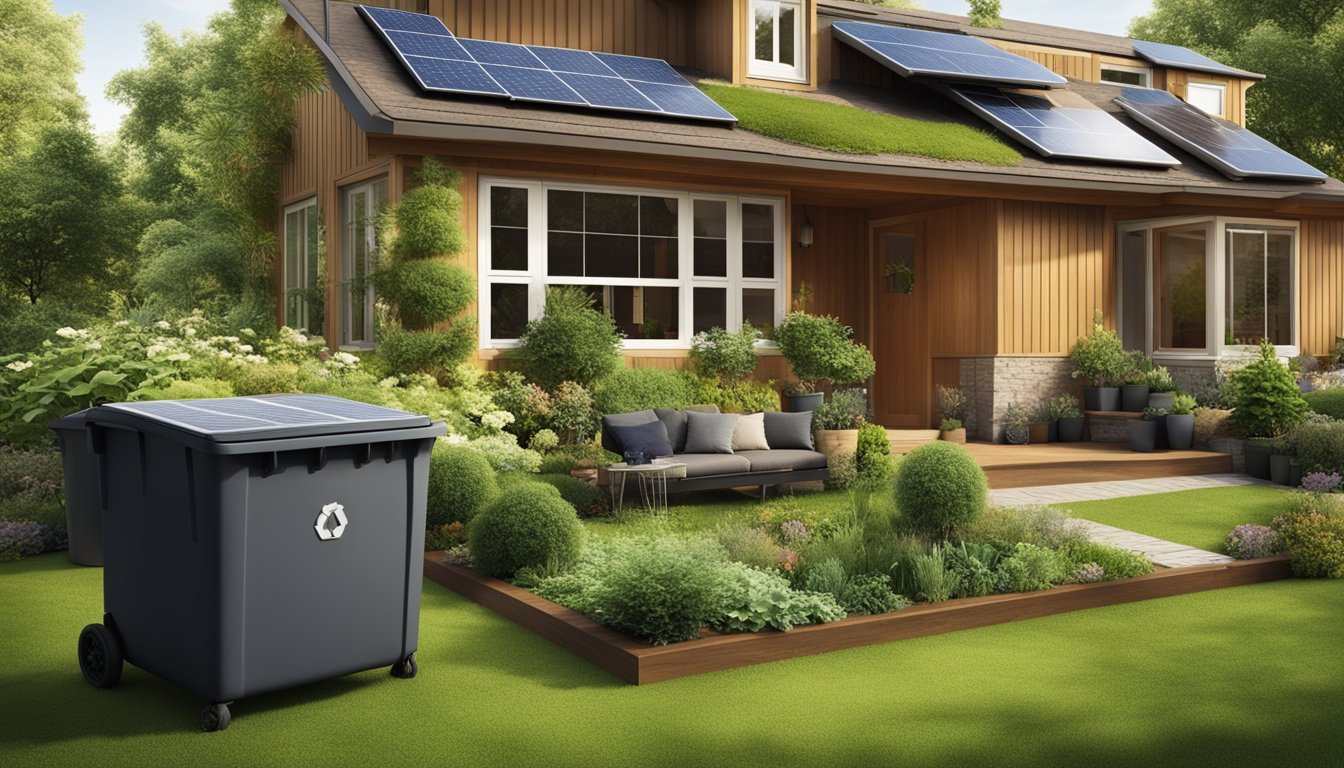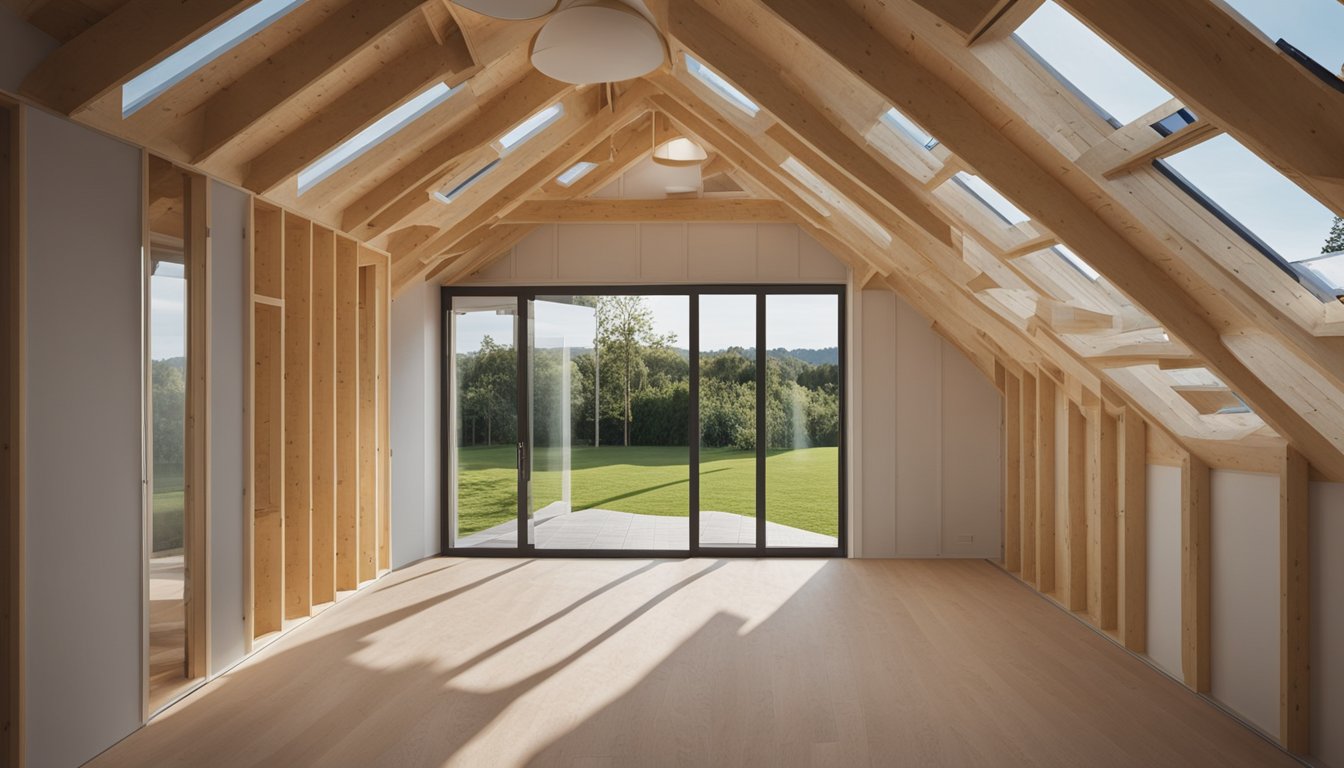Late updated: 30 Mar 2025 14:03
Written by: Sarah Hollister
Eco-Friendly Home Insulation Ideas: Sustainable Solutions for Every Budget
In our journey towards creating a sustainable living environment, eco-friendly home insulation plays a pivotal role. Not only does it enhance energy efficiency, but it also contributes to environmental protection. Among the top contenders for green insulation solutions are natural materials like wool and cork, alongside recycled options like cotton and newspaper, offering both sustainability and high performance.

As we delve deeper into these alternatives, it's essential to consider how each material aligns with our eco-friendly building goals. Moreover, integrating these advanced insulation techniques can significantly reduce energy consumption in our homes, offering both ecological and economic benefits. It is evident that modern insulation materials are not only environmentally friendly but also engineered for maximum effectiveness.
Key Takeaways
- Eco-friendly insulation boosts energy efficiency.
- Recycled and natural materials offer sustainable solutions.
- Advanced techniques provide ecological and economic benefits.
Fundamentals of Home Insulation
Home insulation plays a critical role in enhancing energy efficiency and reducing heat loss. By selecting the right materials, we can ensure homes remain warm in winter and cool in summer, while reducing environmental impact.
Understanding R-Value and Energy Efficiency
The R-value is a measure of thermal resistance; the higher the R-value, the better the insulation's effectiveness. We strive for a balance between high R-value and eco-friendly materials. Energy efficiency depends not only on the R-value but also on proper installation. An improperly installed insulation can lose its effectiveness, leading to higher energy bills. Understanding R-value helps us choose the best insulation for different areas of the home, ensuring energy is not wasted.
Types of Eco-Friendly Insulation Materials
There are numerous eco-friendly options that combine sustainability with high performance. Cellulose insulation, made from recycled newspapers, is non-toxic and provides excellent thermal resistance. Another option, sheep's wool insulation, is a natural material that is renewable and has a decent R-value. Spray foam insulation offers high R-value per inch and uses fewer materials. Other choices include materials like cork and denim, both offering insulation properties along with reduced environmental impact. By choosing these materials, we contribute to a more sustainable future while achieving desired energy efficiency.
Identifying and Addressing Heat Loss
Heat loss can significantly affect a building's energy efficiency. We often find that attics, walls, windows, and floors are common areas where heat escapes. Identifying and addressing these vulnerabilities requires a strategic approach. Sealing gaps and using appropriate insulation types, such as spray foam or cellulose, mitigates heat loss effectively. It is crucial to conduct regular checks and maintenance to ensure insulation remains effective over time. By reducing heat loss, we not only save energy but also improve the comfort and sustainability of our homes.
Advanced Home Insulation Techniques

To create a truly energy-efficient home, exploring advanced insulation techniques is essential. These methods can significantly reduce energy consumption, lower heating and cooling costs, and minimise environmental impact. We will explore retrofitting older homes, conducting energy audits, and utilising innovative insulation materials and practices.
Retrofitting Older Homes
Retrofitting older homes with modern insulation can be challenging but rewarding. The key is to update existing structures without compromising their historical value. Blanket insulation, such as fibreglass or wool, is often used in walls and attics to enhance thermal resistance.
Utilising reclaimed materials for insulation can retain the building's character while being eco-friendly. Insulation contractors can help identify areas of air leakage that need sealing with caulk and foam boards, reducing unwanted drafts. This reduction in energy loss could lead to noticeable financial savings on energy bills.
Energy Audits and Improving Insulation Performance
Conducting an energy audit is crucial to understanding where a home loses efficiency. It reveals weak points in insulation and areas where improvements can be made. Professionals use sophisticated instruments to assess thermal losses and pinpoint areas for improvement.
Using the audit results, we can strategically increase attic insulation or replace poorly performing materials. Addressing air leakage points can greatly reduce energy consumption and emissions. Improved insulation performance also results in lower energy bills and a reduced carbon footprint, contributing positively to the environment.
Innovative Materials and Practices
Incorporating new materials and methods can greatly improve a building's thermal performance. Structural insulated panels (SIPs) provide superior insulation and are easily integrated into various building designs. They can effectively lower heating and cooling costs by providing a tight building envelope.
Additionally, advanced spray foams with fewer VOCs and no formaldehyde or urea-formaldehyde emissions are gaining popularity. They offer excellent sealing properties, combating air infiltration and improving overall efficiency. When combined with renewable energy solutions like solar panels, they create a synergistic effect in reducing a home's overall energy consumption and environmental impact.
Frequently Asked Questions

In our exploration of eco-friendly home insulation, we address several key inquiries. From cost-effective options to sustainable material choices, understanding the impact of cellulose insulation, and finding alternatives for traditional fibreglass insulation, these questions provide clarity. Consideration is also given to R-values and the selection of low-toxic materials to ensure a safe and sustainable home environment.
What are the most cost-effective eco-friendly insulation options available?
Recycled materials like cellulose, made from paper or denim, are notable for affordability. Cotton batt insulation, derived from post-consumer recycled materials, is another cost-effective choice. These materials typically offer efficient insulation without breaking the bank.
Which natural materials are considered best for house insulation?
Sheep's wool and straw bales are popular for their natural insulating properties. Sheep's wool is particularly favoured for its moisture resilience and excellent thermal performance. Meanwhile, straw bales offer a renewable and biodegradable option that insulates well.
How does cellulose insulation compare to traditional insulating materials in terms of environmental impact?
Cellulose insulation generally requires less energy to produce compared to traditional options like fibreglass. Its high recycled content further lowers its environmental footprint, making it a sustainable choice. Unlike fibreglass, the processing of cellulose typically involves fewer health-related risks.
What sustainable alternatives exist for replacing fibreglass insulation?
Soy-based foams and recycled glass or plastic are viable alternatives. These materials not only reduce reliance on fibreglass but also enhance sustainability. Additionally, they often provide comparable thermal performance without the negative aspects of fibreglass production.
What are the R-value considerations when selecting eco-friendly insulation?
Eco-friendly insulation materials like wool, cellulose, and foam provide different R-values, a measure of thermal resistance. Higher R-values often indicate better insulation effectiveness. It’s crucial to choose materials that match your climate needs without sacrificing eco-consciousness.
What least toxic options are available for home insulation?
Options such as cotton batts and sheep's wool are low in chemicals and additives, offering a healthier indoor environment. These materials typically undergo minimal processing, reducing the presence of irritants and potential allergens, thereby promoting safer living spaces.
